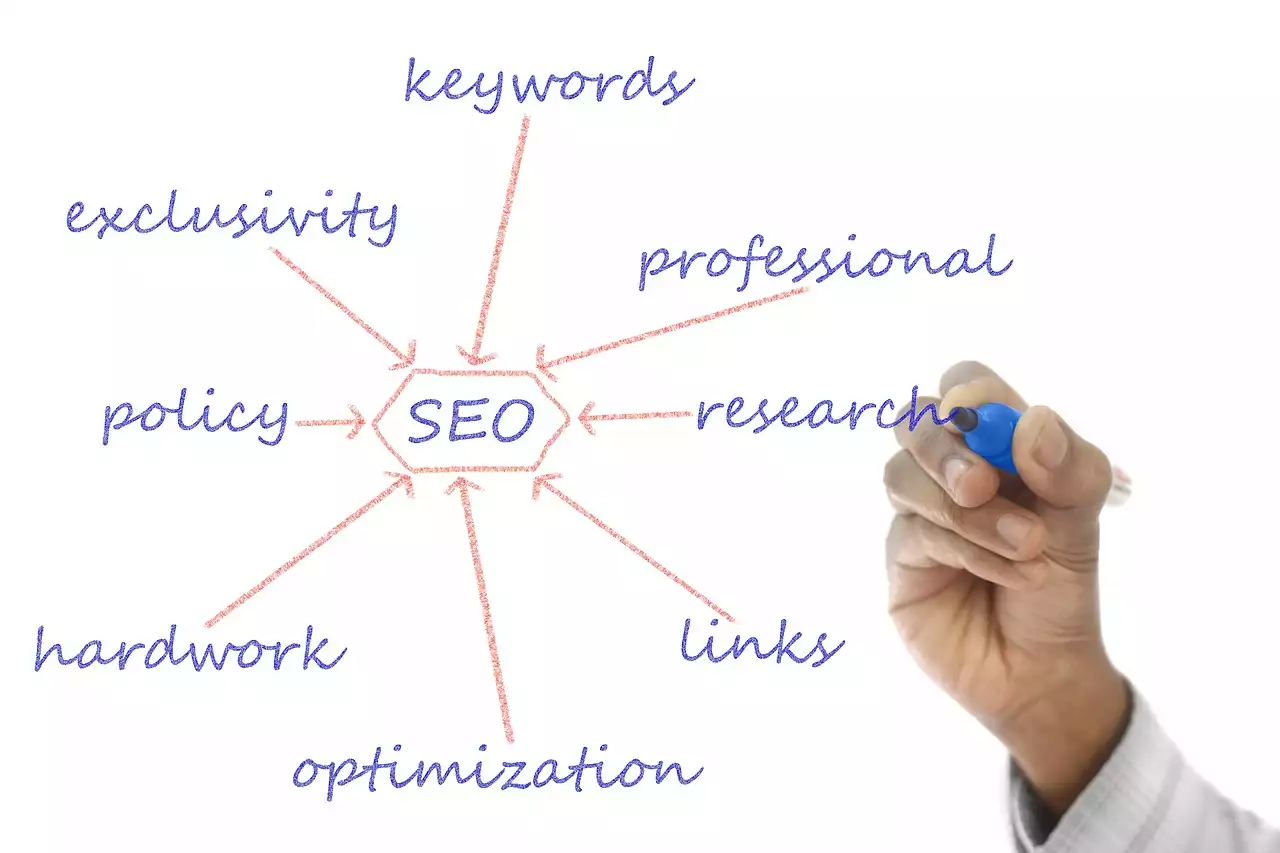Introduction
In the ever-evolving world of SEO, unlocking success is no easy feat. However, with an audience-first approach, taking your SEO strategy to new heights becomes not only doable but also highly effective. By prioritizing the needs and interests of your target audience, you can create content that resonates deeply and drives meaningful engagement.
By understanding who your audience is and what they're searching for, you can tailor your SEO efforts to meet their specific needs. Gone are the days of keyword stuffing and generic content. Instead, an audience-first approach focuses on delivering valuable, relevant, and personalized content that truly speaks to your audience.
Not only does this enhance user experience, but it also aligns with the core principles of search engines like Google, who prioritize delivering high-quality content to users. By creating content that is truly valuable to your audience, you can improve your organic search rankings, increase website traffic, and ultimately, drive more conversions.
In this article, we'll explore how an audience-first approach can take your SEO efforts to new heights. So let's dive in and discover the key strategies and tactics that will unlock your success in the digital landscape.
The Importance of an Audience-First Approach in SEO
When it comes to SEO, understanding your audience is the foundation of success. By putting your audience at the forefront of your strategy, you can create content that truly resonates and connects with them. This audience-first approach is crucial because it allows you to align your content with the needs, interests, and preferences of your target audience.
By focusing on your audience, you can identify the specific keywords and topics they are searching for. This insight enables you to optimize your content and website to better meet their needs, improving your chances of ranking higher in search engine results. Moreover, an audience-first approach helps you build trust and credibility with your audience, as they see you as a reliable source of information that caters to their specific interests.
In addition, search engines like Google are increasingly prioritizing user experience and are constantly updating their algorithms to reward websites that prioritize their audience. By taking an audience-first approach, you not only improve your chances of ranking higher in search results but also enhance the overall user experience, leading to increased engagement and conversions.
Understanding Audience Behavior and Intent
To effectively implement an audience-first approach in SEO, you first need to understand your audience's behavior and intent. This involves analyzing their search patterns, identifying their pain points, and determining what drives them to seek information or make a purchase.
One way to gain insights into audience behavior is by analyzing keyword data. By examining the keywords and phrases your audience uses when searching, you can gain valuable insights into their interests and intent. This data can help you create content that directly addresses their needs and provides relevant solutions.
Another useful tool for understanding audience behavior is Google Analytics. By analyzing metrics such as bounce rate, time on page, and conversion rates, you can gain insights into how your audience interacts with your website. This data allows you to identify areas for improvement and optimize your website to better meet their needs.
Conducting Audience Research for SEO
Once you have a clear understanding of your audience's behavior and intent, it's important to conduct thorough audience research to gather more insights. This research involves diving deeper into your audience's demographics, interests, preferences, and pain points.
One effective way to conduct audience research is by creating buyer personas. A buyer persona is a detailed profile of your ideal customer, including their age, gender, occupation, interests, challenges, and motivations. By creating buyer personas, you can better understand your audience's needs and tailor your content to resonate with them.
Additionally, social media listening tools can be invaluable for audience research. By monitoring conversations and engagements related to your industry or niche, you can gain insights into what your audience is talking about, what questions they have, and what content they find valuable. This information can inform your content strategy and help you create highly relevant and engaging content.
Creating Targeted and Relevant Content for Your Audience
With a deep understanding of your audience, you can now create targeted and relevant content that speaks directly to their needs and interests. This involves aligning your content topics, keywords, and messaging with what your audience is searching for.
Start by conducting keyword research to identify the most relevant and high-intent keywords for your audience. Tools like Google Keyword Planner and SEMrush can help you discover keywords that have high search volume and low competition. By incorporating these keywords naturally into your content, you can improve your chances of ranking higher in search results and attracting your target audience.
However, it's important to note that creating valuable content goes beyond simply incorporating keywords. Your content should provide genuine value, answer your audience's questions, and offer actionable insights. By creating content that addresses their pain points and provides solutions, you position yourself as a trusted authority in your industry.
In addition to written content, consider diversifying your content formats to cater to different audience preferences. This can include videos, infographics, podcasts, and interactive content. By offering a variety of content formats, you can engage a wider audience and cater to different learning styles.
Optimizing Your Website for User Experience
An audience-first approach in SEO extends beyond content creation. It also involves optimizing your website for a seamless user experience. When your website is user-friendly, easy to navigate, and loads quickly, it enhances the overall user experience and encourages visitors to stay longer and engage with your content.
Start by ensuring that your website is mobile-friendly, as an increasing number of users access the internet through their smartphones. A responsive design ensures that your website adjusts to different screen sizes, providing a consistent and enjoyable experience for mobile users.
Next, optimize your website's loading speed by compressing images, minimizing the use of unnecessary scripts, and leveraging browser caching. Slow-loading websites frustrate users and increase bounce rates, negatively impacting your SEO efforts.
Additionally, organize your website's content in a logical and intuitive manner. Use clear navigation menus, breadcrumbs, and internal linking to help users easily navigate through your website and find the information they're looking for.
Utilizing Data-Driven Insights to Improve SEO Performance
Data-driven insights are crucial for continuously improving your SEO performance. By analyzing data and metrics, you can identify areas for improvement and make informed decisions about your SEO strategy.
Regularly monitor your website's analytics to gain insights into your audience's behavior, traffic sources, and conversion rates. This data can help you identify which channels and tactics are driving the most valuable traffic and conversions, allowing you to allocate your resources effectively.
Additionally, use tools like Google Search Console to monitor your website's performance in search results. By analyzing search queries, impressions, and click-through rates, you can identify opportunities to optimize your content and improve your visibility in search results.
Furthermore, A/B testing can be a powerful tool for optimizing your SEO efforts. By testing different variations of your content, headlines, and calls-to-action, you can identify what resonates best with your audience and drives the highest engagement and conversions.
The Role of Social Media in Audience-First SEO
Social media platforms play a significant role in an audience-first approach to SEO. They provide an avenue for engaging with your audience, building brand awareness, and driving traffic to your website.
Start by identifying the social media platforms that are most popular among your target audience. Focus your efforts on these platforms to maximize your reach and engagement. For example, if your audience consists mainly of professionals, LinkedIn may be a more effective platform than Instagram.
Create a social media content strategy that aligns with your audience's interests and preferences. Your content should provide value, spark conversations, and encourage sharing. By consistently sharing valuable content, you can build a loyal following and increase your website's visibility.
Additionally, leverage social media listening tools to monitor conversations and engage with your audience. Respond to comments, answer questions, and address concerns promptly. This not only helps build relationships but also demonstrates your expertise and dedication to your audience's needs.
Building Relationships and Engagement with Your Audience
An audience-first approach is not just about attracting new visitors; it's also about building relationships and fostering engagement with your existing audience. By nurturing these relationships, you can turn casual visitors into loyal customers and advocates of your brand.
Start by creating opportunities for two-way communication with your audience. Encourage comments on your blog posts, ask questions on social media, and respond to feedback and inquiries promptly. This shows that you value their opinions and are committed to providing a positive user experience.
Additionally, consider implementing a content personalization strategy. By tailoring your content to individual users based on their preferences and behavior, you can deliver a more personalized and relevant experience. This can be done through email marketing, website personalization tools, and dynamic content.
Furthermore, consider leveraging user-generated content (UGC) to increase engagement and build trust. Encourage your audience to share their experiences, reviews, and testimonials. UGC not only adds credibility to your brand but also provides social proof that can influence others' purchasing decisions.
Measuring the Success of an Audience-First SEO Strategy
To gauge the success of your audience-first SEO strategy, it's crucial to establish key performance indicators (KPIs) and regularly monitor and analyze relevant metrics.
Some common KPIs for an audience-first approach include organic search traffic, keyword rankings, engagement metrics (such as time on page, bounce rate, and social shares), and conversion rates. By tracking these metrics over time, you can assess the effectiveness of your strategy and make data-driven adjustments.
Additionally, regularly review your website's analytics to gain insights into user behavior and identify areas for improvement. Are users finding the information they need? Are they navigating through your website easily? Analyzing these metrics can help you identify any gaps or pain points and optimize your website accordingly.
Finally, don't forget to seek feedback from your audience. Conduct surveys, polls, and interviews to gather insights into their satisfaction levels, preferences, and suggestions for improvement. This direct feedback can provide invaluable guidance for refining your audience-first SEO strategy.
Conclusion
In the digital landscape, an audience-first approach is key to unlocking success in SEO. By understanding your audience's needs, behavior, and intent, you can create targeted and relevant content that resonates deeply with them. This not only enhances user experience but also improves your chances of ranking higher in search results and driving more conversions.
Remember to continuously analyze data and metrics, adapt your strategy based on insights, and foster relationships and engagement with your audience. By putting your audience first, you'll be well on your way to achieving SEO success and standing out in the competitive digital landscape.










